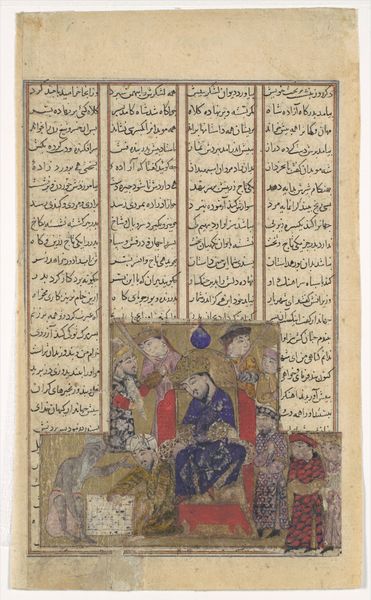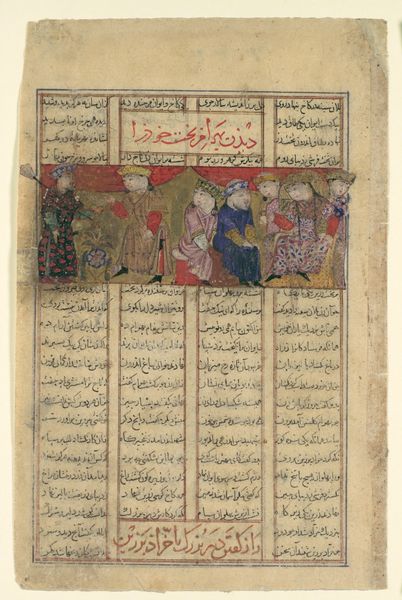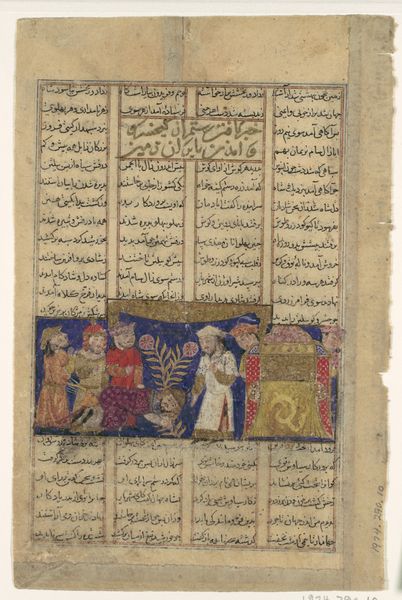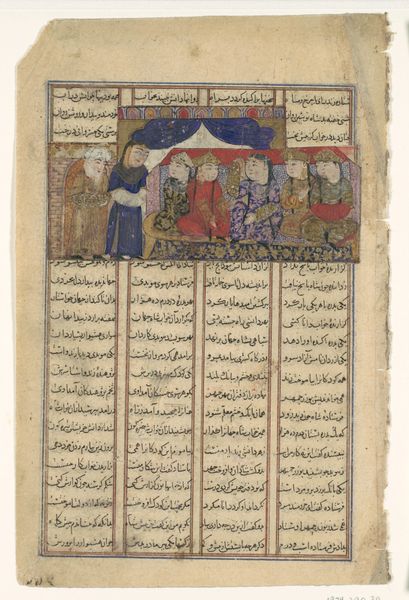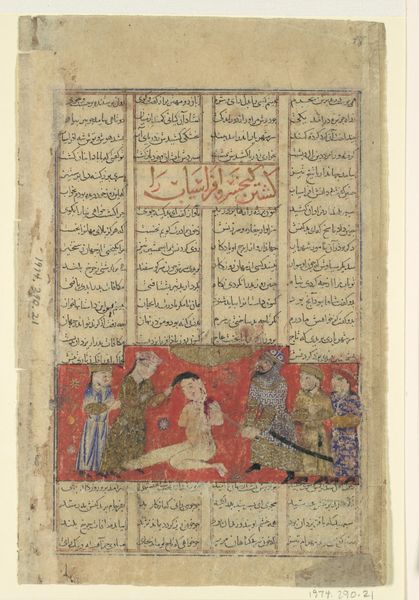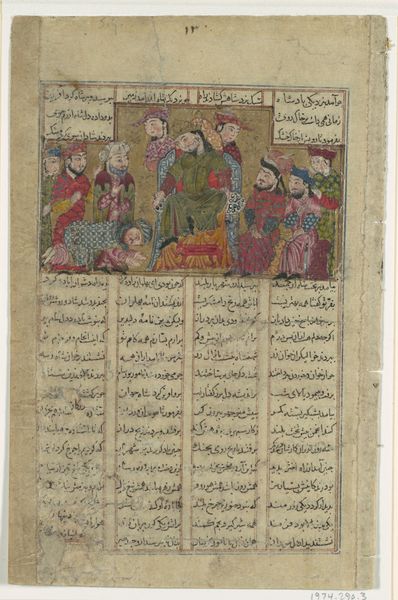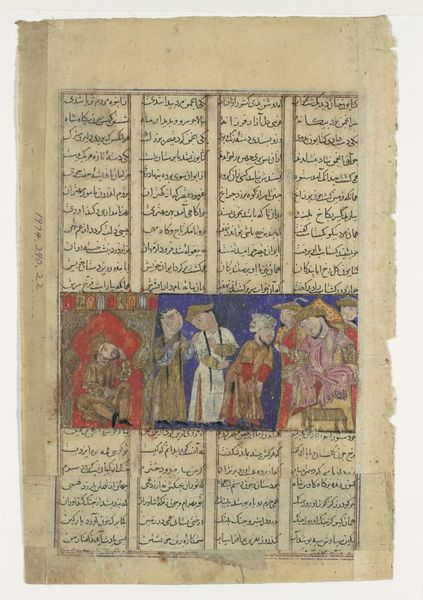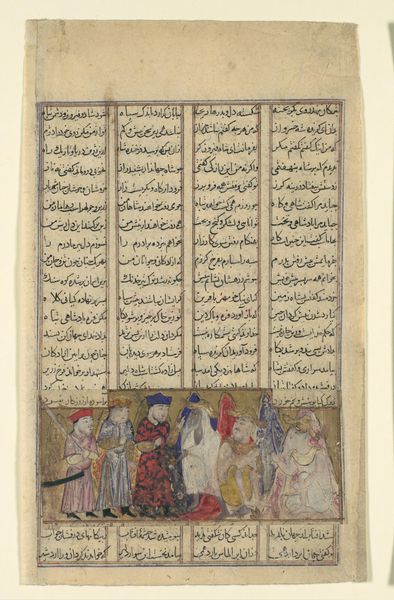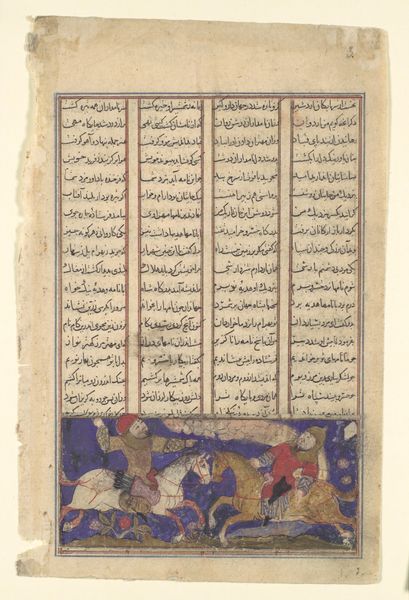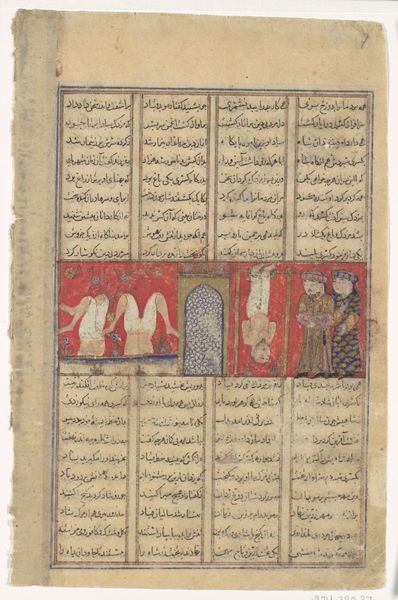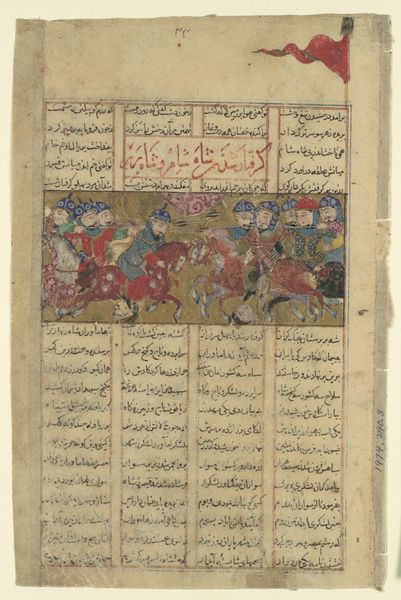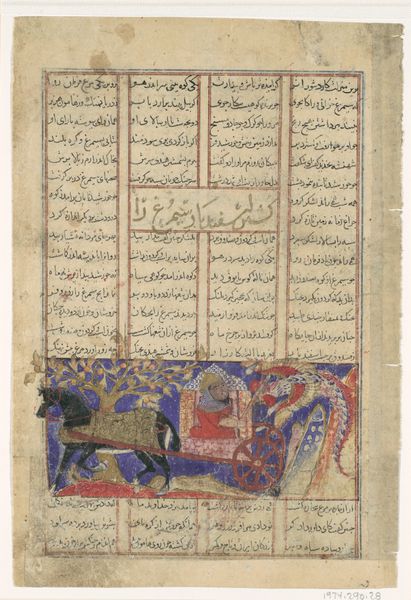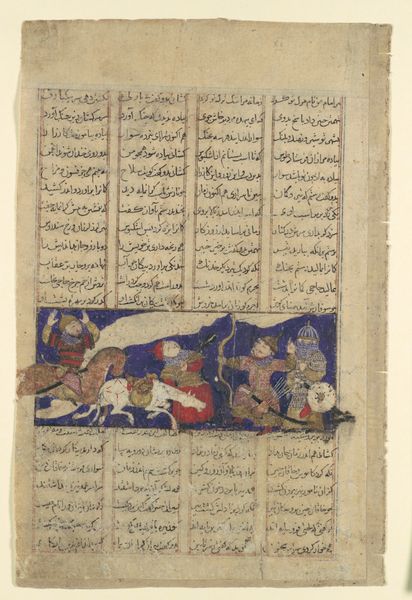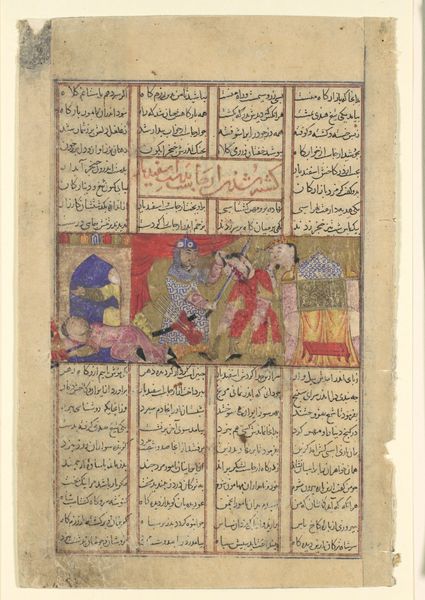
"Faramarz Slays Varazad", Folio from a Shahnama (Book of Kings) of Abu'l Qasim Firdausi 1305 - 1365
0:00
0:00
painting, paper, ink
#
narrative-art
#
painting
#
figuration
#
paper
#
ink
#
horse
#
men
#
islamic-art
#
miniature
Dimensions: Page: H. 8 1/16 in. (20.5 cm) W. 5 1/4 in. (13.3 cm) Painting: H. 1 13/16 in. (4.6 cm) W. 4 1/4 in. (10.8 cm)
Copyright: Public Domain
Editor: This is a page from the Shahnama, the Book of Kings, depicting “Faramarz Slays Varazad”. It’s an ink and colors on paper, created sometime between 1305 and 1365. I find it really striking how dynamic the scene is despite being on such a small scale. What stands out to you? Curator: What immediately catches my eye is the context of production of the manuscript. Think about the social and political forces that shaped the patronage of such lavishly illustrated books. This wasn't just about artistic expression, it was a very public declaration of power. Who was commissioning it, and how would that patron use such images? Editor: So, the painting becomes part of a political strategy? How so? Curator: Exactly. By commissioning such works, rulers aligned themselves with legendary heroes, reinforcing their legitimacy. These images presented an idealized vision of kingship – valor, justice, and piety – projecting a specific image to their court and, perhaps more broadly, to the people. Also consider that manuscripts such as the Shahnama held significant cultural importance in the Persian-speaking world. What role did they play in forging a collective identity? Editor: Oh, I see, it is meant to remind people about a shared heritage. So, a patron might use this artwork to… bolster their power using historical stories? Curator: Precisely! Think about how narratives can be strategically deployed to reinforce specific political agendas. That helps you look beyond the aesthetics. Editor: I never really thought about how political art from so long ago could still be. It completely reshapes how I see not only this artwork but other ones that, at first glance, are seemingly about legendary events, but in fact, the commissioner uses such imageries for strategic advantages in their world! Thanks. Curator: Indeed. And recognizing those layered contexts makes engaging with art history that much more compelling.
Comments
No comments
Be the first to comment and join the conversation on the ultimate creative platform.
